How to Make or Find Good STEM Lessons
What STEM lessons will you use with your students this year?
This question probably looms large as you look for practical tips and information about quality STEM learning experiences for your students.
In this post I’ll summarize what the “ideal” STEM lesson might look like, with these understandings:
► There’s no single, die-cut STEM curriculum that every school or teacher should be using. No one lesson is right for all kids. As a STEM teacher, you have plenty of opportunity to hand-craft an effective lesson for your students.
► The STEM lesson components mentioned here are rarely all found in the same lesson. It may take several different lessons to give your kids experience with all the components. Over the course of the school year, however, your kids should actively engage with all of the components.
► Effective STEM lessons take several class periods to complete. One-period lessons can serve a strategic purpose by focusing on a particular STEM component, but they should not comprise your entire STEM program.
Whether you’re looking for an existing STEM lesson, redesigning a favorite lesson as a STEM project, or starting from scratch, you need to ask this question: Is this really a STEM lesson?
To help you answer this question, I’m listing some STEM specifications below. You can download a companion checklist, STEM Lesson Specifications, from my book website.
STEM Specifications to Consider
1. Does the lesson present a real problem (an engineering challenge)? You’re looking for lessons that will tap into students’ natural and innate curiosity about the real world and entice them to ask and investigate questions they care about. The best STEM lessons invite kids to address compelling social, economic, and environmental issues in their lives and communities. For example, they might design and create solutions to make a product safer or more cost-effective. They might design a way to minimize a type of damage to their local environment. They might work on a solution for a health or accessibility issue.
2. Will students relate to the problem? The amount of enthusiasm and interest your students bring to the lesson depends on its relevance for them. Choose a lesson that focuses on a real problem – not a “pretend” scenario that involves mythical creatures or plants. If possible, let your students have a part in identifying a real problem. Ownership increases learning. When I began teaching at a newly constructed school, my science students were genuinely concerned about the runoff damage from the large asphalt parking lot. The kids tackled that problem and maintained their interest and buy-in throughout the project. (If interested, read about it here.)
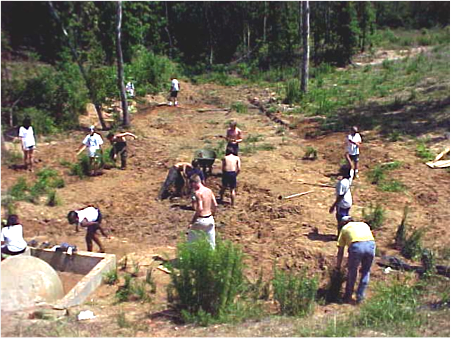
This STEM project engaged students in solving a runoff problem in their own middle school parking lot. (Learn more)
3. Does the lesson allow students multiple and creative approaches and solutions for solving the problem? Remember that STEM challenges don’t have just one correct solution. For example, a bridge might be successfully constructed using several different designs. Or a container of ice cream might be kept solid for a given period of time by a number of lunch bag insulation designs. In the STEM lesson you teach, different student teams should be able to research and select different approaches and solutions.
4. Does the lesson integrate and apply important science and math grade-level content? STEM lessons go beyond just fun activities. To have maximum impact, STEM projects cement students’ grasp of important science and math concepts and drill deeper into those. Lessons should focus on one or more important grade-level objectives for both content areas. Note: You don’t have to give both math and science equal emphasis in every STEM challenge; but both content areas should be present in each lesson to some degree.
5. Does the lesson intentionally use the engineering design process as the approach to solve problems?
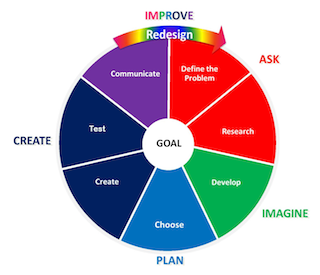 By now you know that the “E” in STEM stands for engineering – a key component that makes STEM different from regular science, technology and math instruction. Authentic STEM lessons involve students in using an engineering design process (EDP) similar to the one shown here. Most EDPs contain similar steps. When selecting lessons, look carefully to be sure the steps in this process are present. Even if they are not specifically labeled in the lesson you choose, they should be clearly present. (Download my annotated example.)
By now you know that the “E” in STEM stands for engineering – a key component that makes STEM different from regular science, technology and math instruction. Authentic STEM lessons involve students in using an engineering design process (EDP) similar to the one shown here. Most EDPs contain similar steps. When selecting lessons, look carefully to be sure the steps in this process are present. Even if they are not specifically labeled in the lesson you choose, they should be clearly present. (Download my annotated example.)
6. Does the lesson use a student-centered, hands-on teaching and learning approach? STEM lessons encourage kids to explore and solve problems through activities that are as authentic as possible. A project-based learning (PBL) approach that focuses on developing rigor in science and math works well. Look for these instructional characteristics in lessons:
- The lesson features flexibility and choice. It is not prescriptive, and teachers play a facilitator role – providing just enough guidance and monitoring.
- The lesson encourages kids to carry out hands-on investigations and grow in their ability to think creatively, wrestle with ideas, explore, make decisions, and test their ideas as possible solutions.
- The learning environment is risk-free and students aren’t afraid to make mistakes. (The class motto might be “No fear here!”) Analyzing mistakes and design failures are simply methods of learning.
7. Does the lesson lead to the design and development of a model or prototype? Make sure that the lesson you choose requires the creation of a model or prototype. (Occasionally students may create a system to solve a problem, but the usual outcome is a prototype.) Models and prototypes are a key to understanding, exploring and expressing almost all big concepts in science and engineering. In addition, kids gain a sense of accomplishment when they apply the what they’ve learned to construct solutions they can see and touch.
8. Is the role of technology in the lesson clear to the students? Technology can help with research, investigation, and design during the lesson. In some cases, students may use coding to create a digital technology for solving a problem. In addition, when they create a solution for a problem, kids are actually creating a technology. They should understand that technology can have both helpful and harmful consequences. Technology plays multiple roles in STEM, and during the lesson its role should be clear to students.
9. Does the lesson successfully engage students in purposeful teamwork? As you examine possible lessons, check to see if they specifically reference student teams. Even better, do the lessons give kids pointers for learning to work collaboratively? STEM lessons would ideally provide some guidance to help them learn and practice successful team behaviors and personal interaction skills. In reality, few lessons actually spell out this teamwork component. If you’d like ideas, you might download the free Student Teaming Tips from my book website.
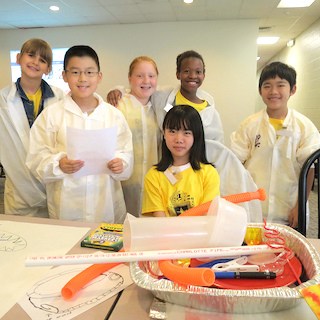 10. Does the lesson include testing prototypes, evaluating results, and redesigning to improve their outcome? Prototype testing and data-gathering are vital parts of any STEM project. Some pre-made lessons stop short of this. If the lesson meets other criteria, you might design this section yourself and round it out to a full-fledged STEM lesson. Students need to be able to represent data graphically and to draw accurate conclusions. Based on the results, they should be able to make informed decisions about redesigning their prototype to improve it.
10. Does the lesson include testing prototypes, evaluating results, and redesigning to improve their outcome? Prototype testing and data-gathering are vital parts of any STEM project. Some pre-made lessons stop short of this. If the lesson meets other criteria, you might design this section yourself and round it out to a full-fledged STEM lesson. Students need to be able to represent data graphically and to draw accurate conclusions. Based on the results, they should be able to make informed decisions about redesigning their prototype to improve it.
11. Does the lesson involve students in communicating their design and results? Specific guidance on creatively and accurately communicating their engineering ideas and solutions often gets short shrift in STEM lessons. Ways of communication include technical writing, blogging, videos, creative poster shows, social media, sharing with experts over Skype, and so on. In your STEM lesson, build creativity by encouraging new and innovative ways of communicating, perhaps in conjunction with arts and language arts teachers. Find audiences for your students!
Will I Ever Find Such Lessons?
What are the chances of finding a STEM lesson that meets all criteria? Chances are better that you’ll find one you like that does not do that. In that case, you can redesign the lesson to include some missing criteria. (One element often missing is the focus on a real-world problem. Use your imagination to add authenticity.)
And remember – all the lesson specifications may not be in the mix during every lesson. Over the course of their STEM experiences, however, students should become thoroughly immersed in all of the STEM components I’ve described here. Then they’ll have a true taste of what a STEM career might be like. (Read more about finding and adapting lessons here.)
Put Some Lessons to the Test
Here are a few STEM-related lessons we’ve found on the web that have at least some elements of a high quality STEM project or activity. Now that you’ve read my suggested criteria, apply them to each of these lessons and see if any are a good fit for your program.
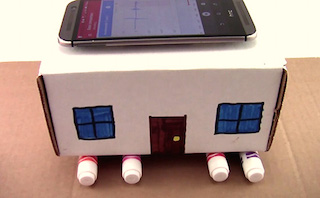 ► Build an Earthquake-Resistant House (Science Buddies)
► Build an Earthquake-Resistant House (Science Buddies)
► Block That Noise! (Science Buddies)
► Cybersecurity: Denial-of-Service Attack (Science Buddies)
► The Bama Bears Challenge (EYE/MAEF)
► Headphone Helper (Design Squad Global)
► Just Like Kidneys: Semipermeable Membrane Prototypes (TeachEngineering)
NOTE: The Science Buddies site requires a free account to access all the details. Just takes a minute. The TeachEngineering site regularly features “Editor’s Picks,” including projects that often meet many of the STEM criteria.
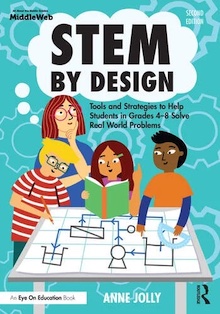 The 2nd Edition of Anne Jolly’s best-selling book STEM by Design: Tools and Strategies to Help Students in Grades 4–8 Solve Real-World Problems (Routledge/ MiddleWeb, 2025) is now available. Visit Anne’s book website for many more articles and free STEM resources and lesson ideas.
The 2nd Edition of Anne Jolly’s best-selling book STEM by Design: Tools and Strategies to Help Students in Grades 4–8 Solve Real-World Problems (Routledge/ MiddleWeb, 2025) is now available. Visit Anne’s book website for many more articles and free STEM resources and lesson ideas.

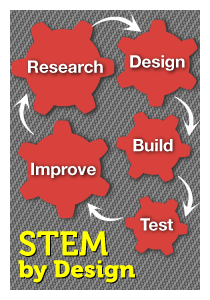
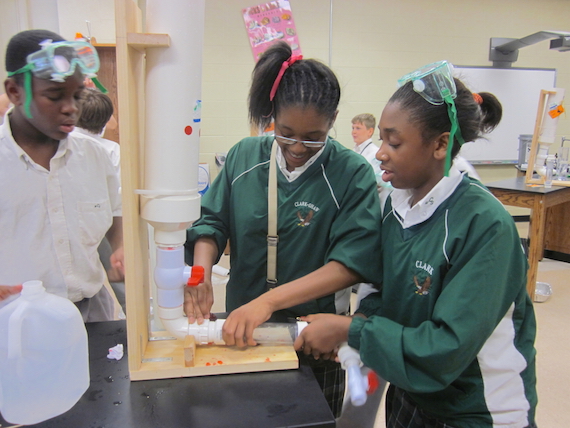































Hello, I am a PhD Scholar. My area of interest is STEM teaching. Anne, I am really thankful to you for the efforts you have made through STEM By Design. I am eager to know where your approach to STEM has been implemented and what are the results? You have implemented these lessons in STEM schools or in regular community schools? I want to apply these lessons in my grade 4 classroom but my school is working in the traditional way. Thank you again and good luck for a better future.
Hi, Samia, we initially implemented this approach in 11 regular middle schools in the Mobile County Public School System in Alabama. The schools contained students of different ethnicities and socioeconomic backgrounds. An external evaluator found that students who used these modules had a deeper understanding of math and science applications and were better able to take a systematic approach to problem solving. The school system then used this approach in its remaining middle and some elementary schools and a nearby school system began using this approach as well.
More recently some colleague and I incorporated this approach into workforce STEM curriculum for middle and elementary schools that’s being used nationwide and in England and France. Feedback is positive although we haven’t yet done formal reviews.